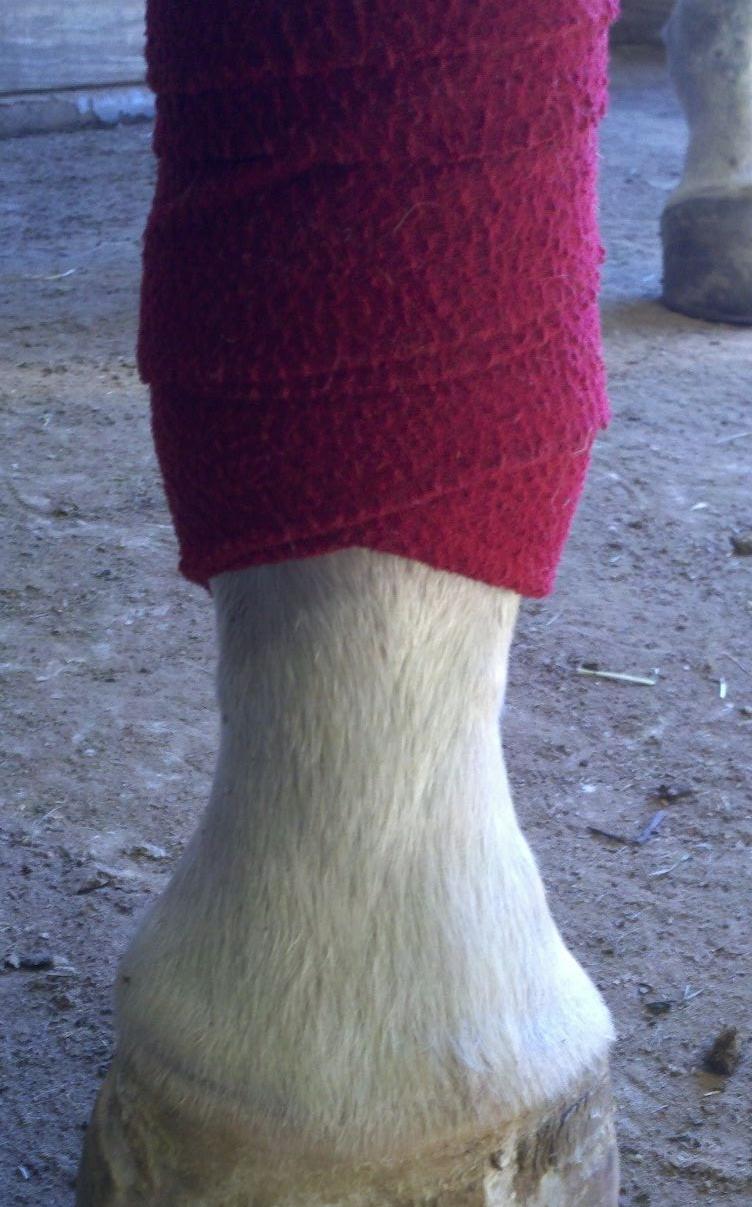
Polo wraps are one of the most common and one of the oldest types of protective equipment. They were designed to protect the horse’s legs from interference caused by the other legs during work. Polos are a long piece of fleece cloth that ranges from 4-6 inches wide, and 6-10 feet long.
There is a common misconception that polos are able to provide support to the leg; this is untrue. Polo wraps do not, and cannot provide support to the leg. For a leg to obtain support it must be partially or completely immobile. Polos are a simple piece of cloth and cannot physically immobilize the leg of a 1000+ pound animal. So, polo wraps provide protection, not support.
Because of this common misconception, many people wrap polos too far up the leg, or too far down onto the pastern. When wrapping the legs in this manner the polos create interference with movement.
Also note the difference between polo wraps and standing bandages. Many catalogs and websites switch the names of these two items because they appear very similar, but they have two separate uses. Just remember that a polo is usually made of fleece or a thick material. Standing bandages are usually made of cotton or a thinner woven material. When looking at a picture in a catalog, the polo will appear fatter, while the standing bandage is skinnier when they are rolled up.
Remember: if done improperly, a polo can cause serious harm to a horses leg. If there is uneven pressure a tendon could possibly bow. If you do not want to risk this, use a splint boot or sports medicine boot instead.
Before you wrap:
You must first make sure your polo is rolled properly. The easiest way to remember which way to roll your polo is if you connect your two Velcro pieces together as shown in the picture below.
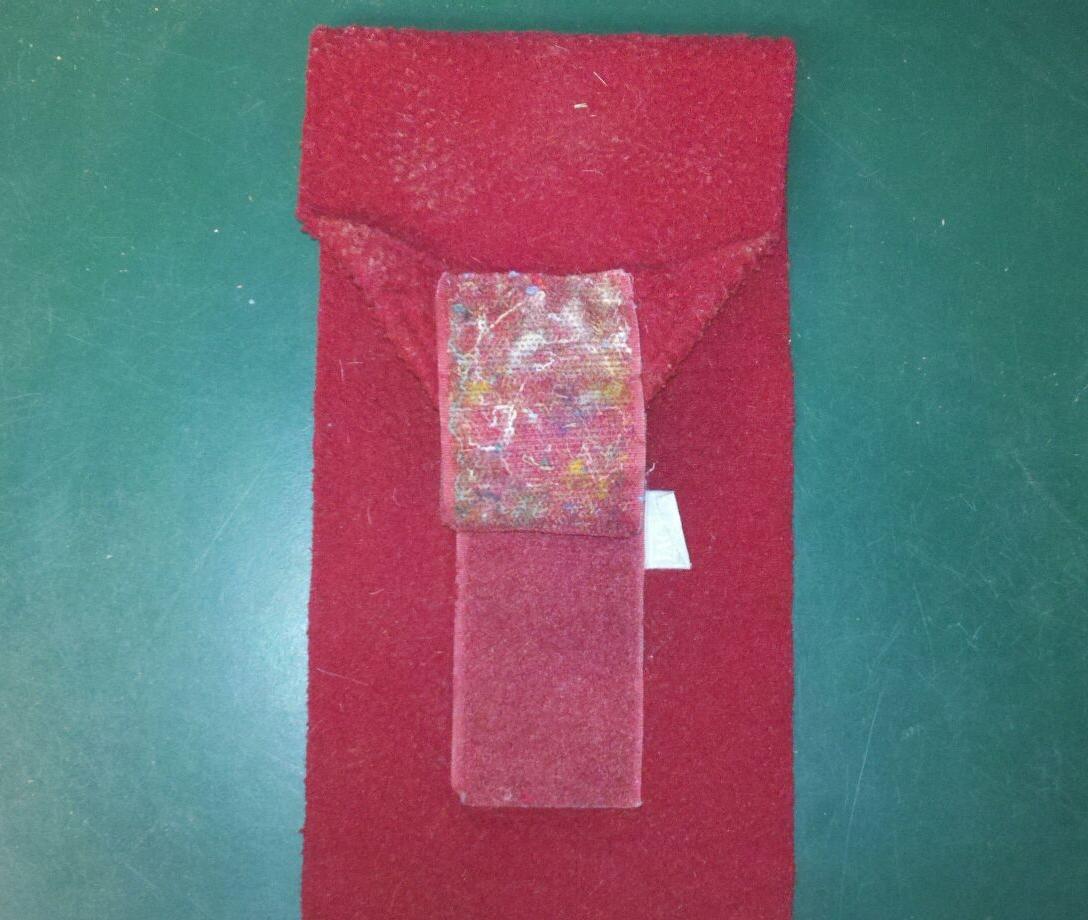
Once your Velcro connects to each other, keep wrapping the polo in the same direction. However, you may need to start at the fold on the top of the wrap making the wrap almost double up in the beginning like in the picture below. This will make sure that your wrap will start off nice and tight.
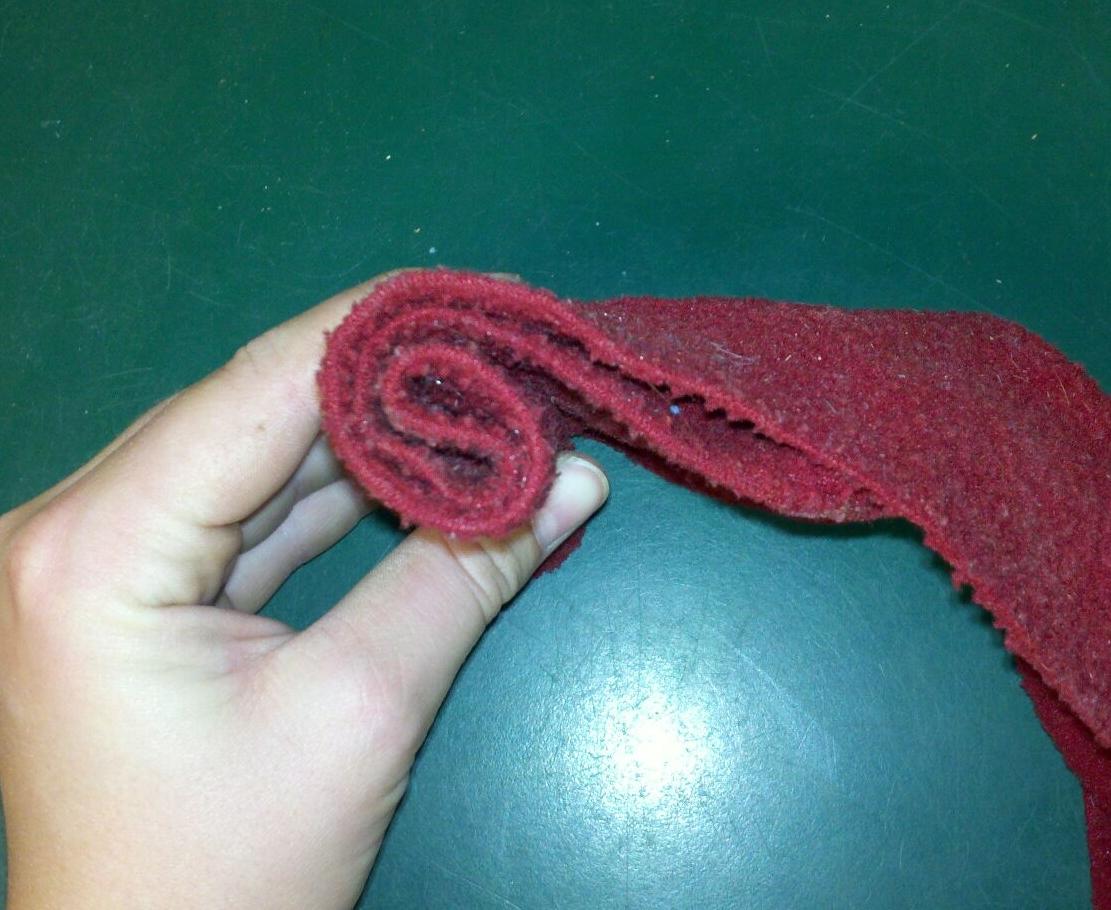
Rolling your polo as tight as possible will make it easier to wrap onto your horses leg. Below is a polo that is wrapped incorrectly because it is too rectangular, and a wrap that is too loose; you will not be able to roll these onto the leg. A polo that is rolled up correctly is also pictured. Notice how it is tight and uniform.
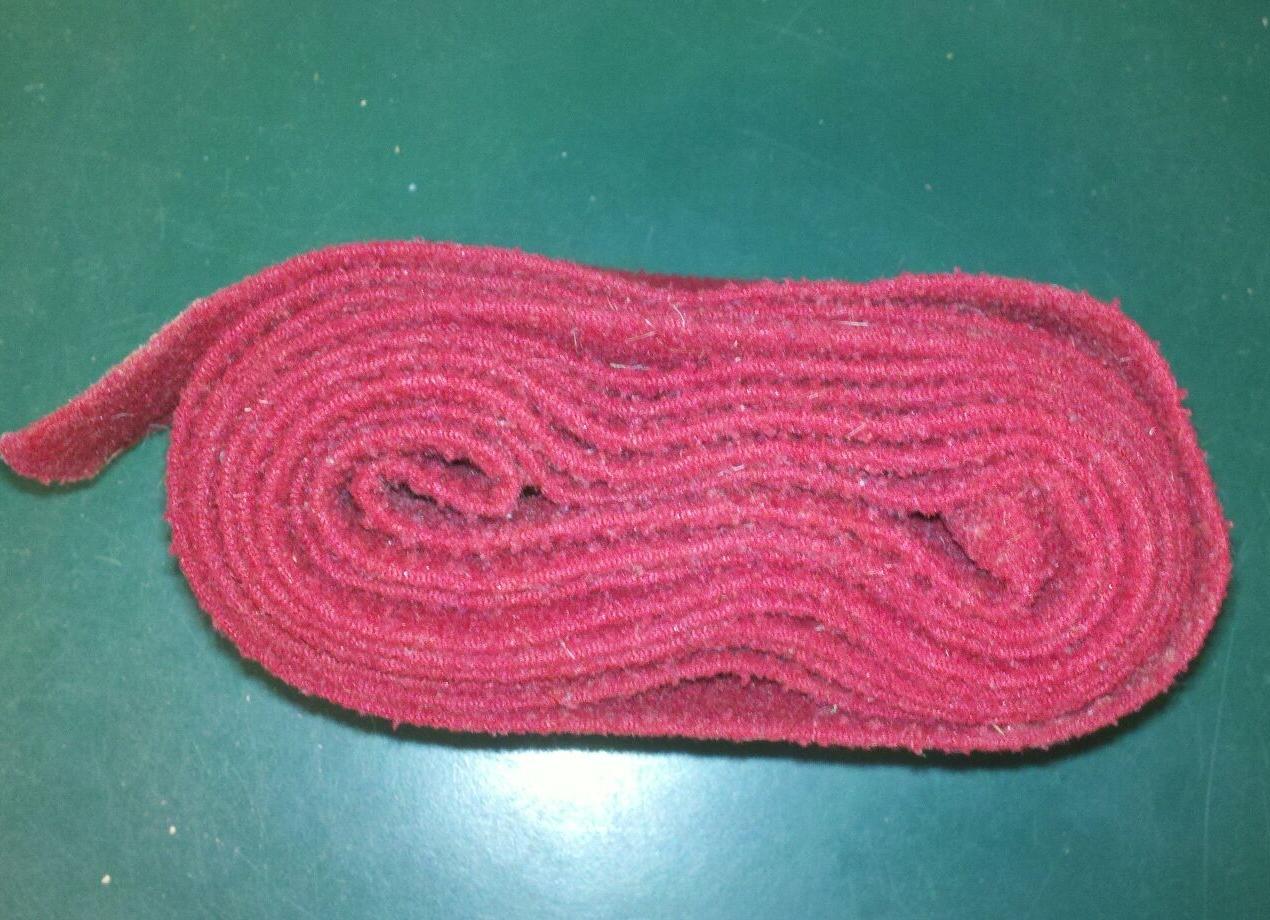
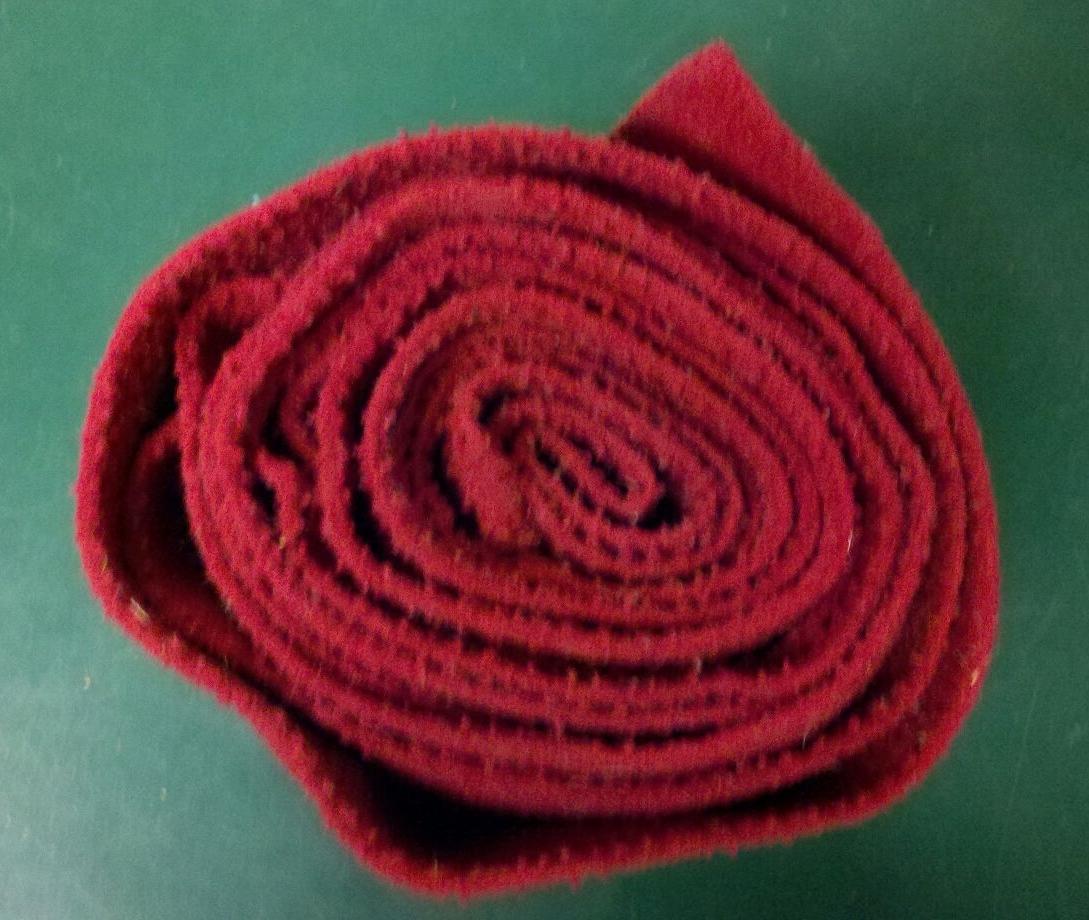

Wrapping:
Before you begin wrapping run your hand down the leg to wipe away any excess dirt that could cause irritation.
Place the wrap on the inside of the cannon without unrolling it. If the end of the polo is facing towards the hindquarters while it is resting on the cannon, then the rest of your wrap should be correct. If the end is facing the hindquarters but is away from the leg you will be wrapping the polo on wrong, and when you are finished your Velcro will be backwards.
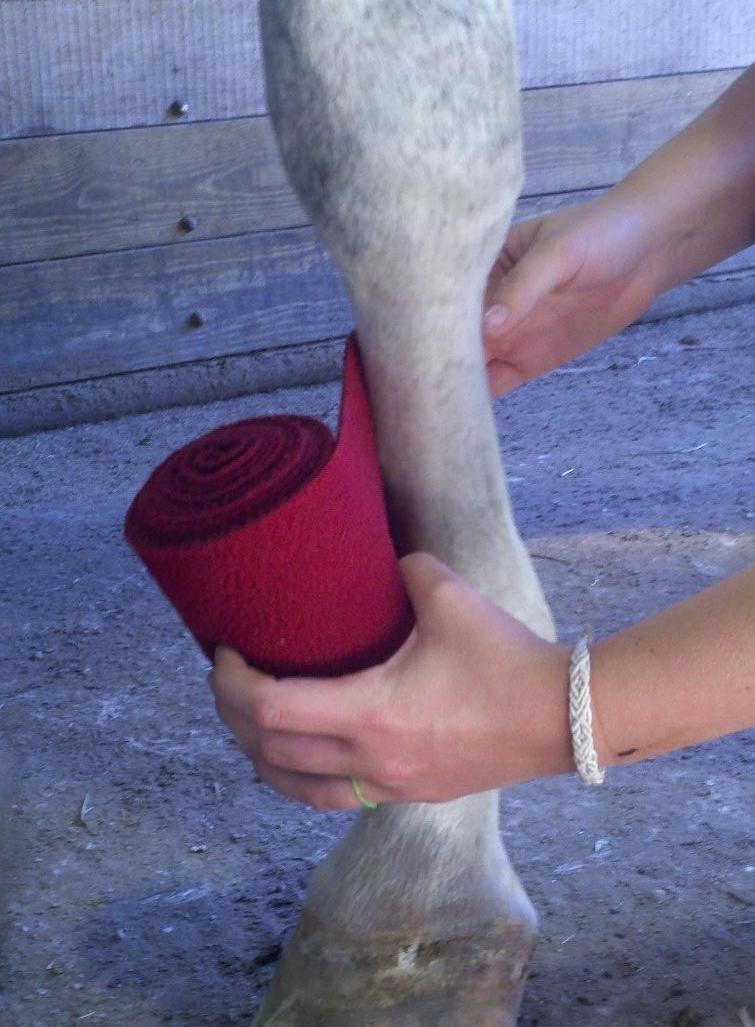
You will always be wrapping inside to outside, and front to back. So, the left legs will always be wrapped counterclockwise and the right legs will always be wrapped clockwise.
Start in the middle of the cannon and roll the polo downward. When you do so, you will be wrapping halfway down the previous track of polo. This way you will never have a gap between polos.

Once you reach the very top of the pastern, wrap downwards and around the fetlock as to cup the fetlock. Your polo should just barely be covering the horse’s ergot, and not be covering any of the pastern. This is the beginning of the ‘V,’ which you will be doing twice.

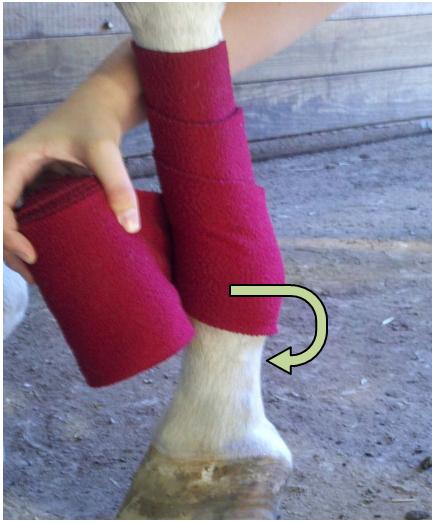
Next, bring your polo back upwards and roll it around the cannon once. You will notice a shallow inverted ‘V’ shape formed in the center of the front of the fetlock. Now, do the same two motions over again; roll downward and back up over the same ‘V’ shape you had before. The reason we create the ‘V’ shape twice is because the fetlock is the most vulnerable part of the leg and receives the most amount of impact from the other legs.
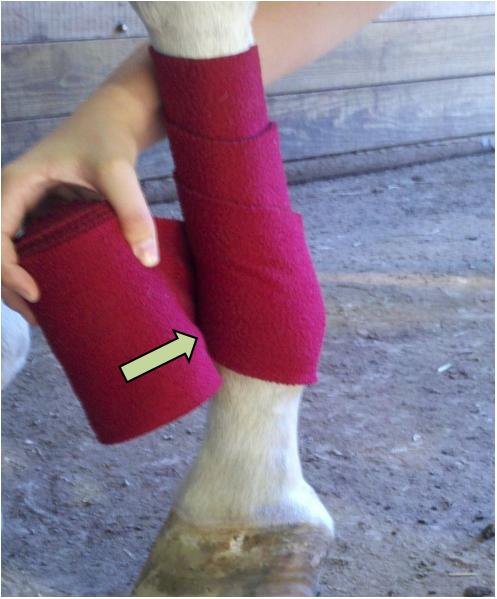
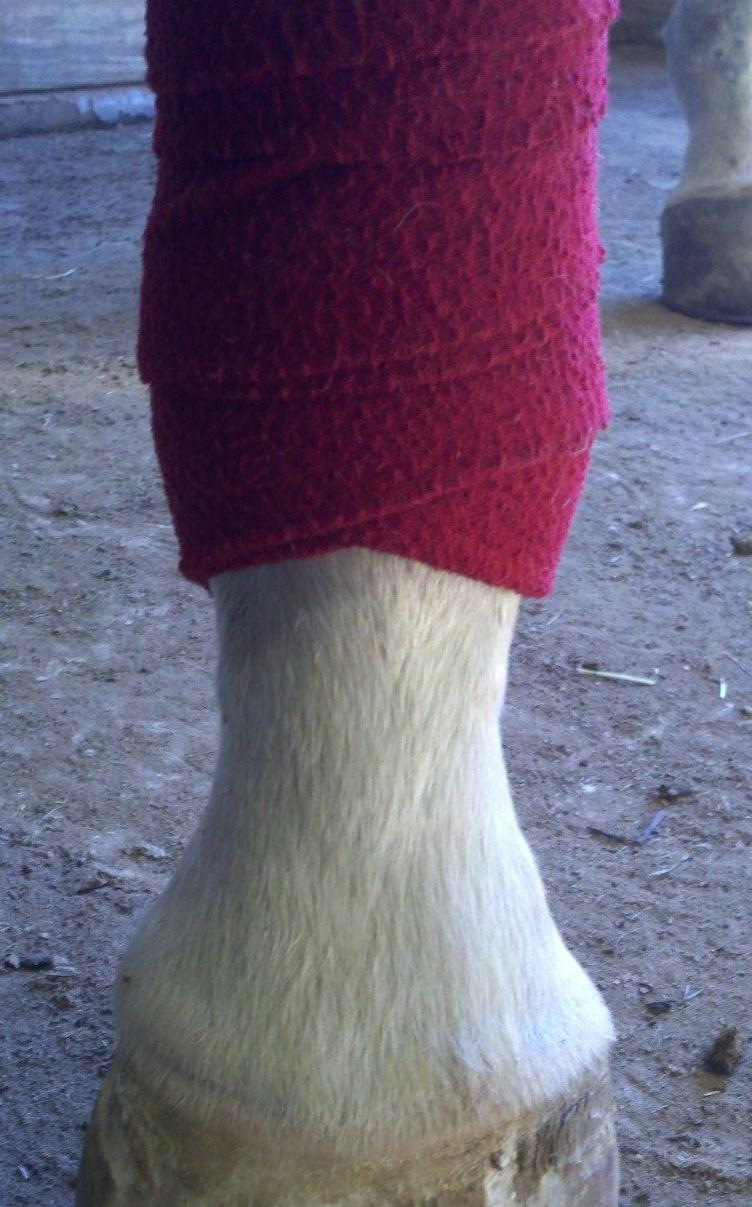
Once you have created the second V then roll the wrap up the rest of the leg. Keep in mind that your goal is to end with the Velcro at the top of the cannon. So, if your wrap is extremely long, or your horse’s cannons are very short, you may have to cover more than half of the previous wrapping. If you reach the top and there is still too much, simply start wrapping downwards again, but keep it in mind for next time.
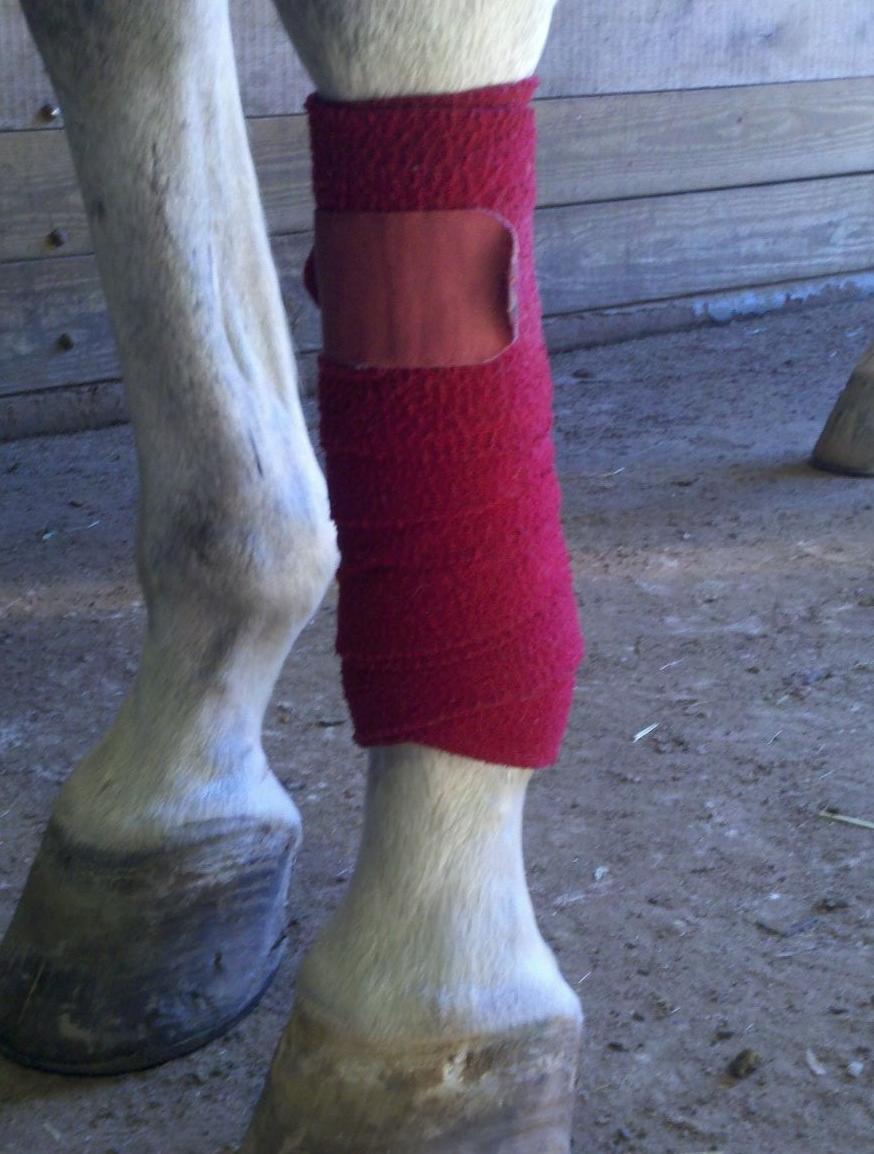
Make certain that while you’re wrapping you’re applying even pressure! If parts of your wrap are tighter than others you may bow a tendon!
Additionally, make sure there are as little wrinkles as possible in your wrap. Wrinkles also cause uneven pressure and are hazardous.
If your Velcro is bad:
If your Velcro seems to not be able to stick to itself then taping the polo on is appropriate. Masking tape is the most appropriate tape to use because it cannot stretch; stretchy tape will wrap too tight and a leg could become seriously injured. If you only have stretchy tapes make sure to lay the tape over the leg; do not wrap it around! There are two ways to use the tape as shown in the pictures below.
First is to simply wrap the tape around itself, or you can wrap in a three tier system. Both are appropriate.
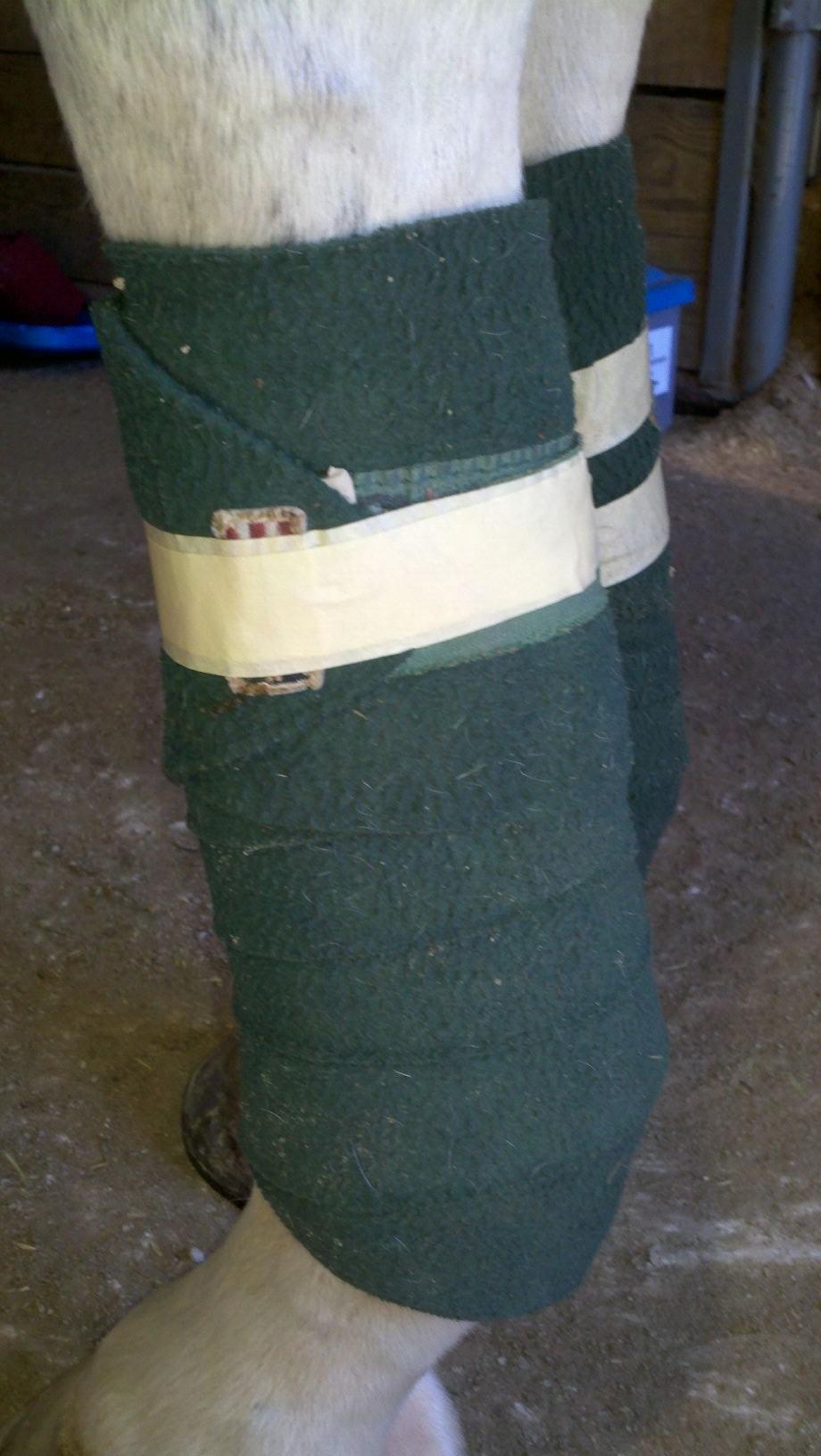
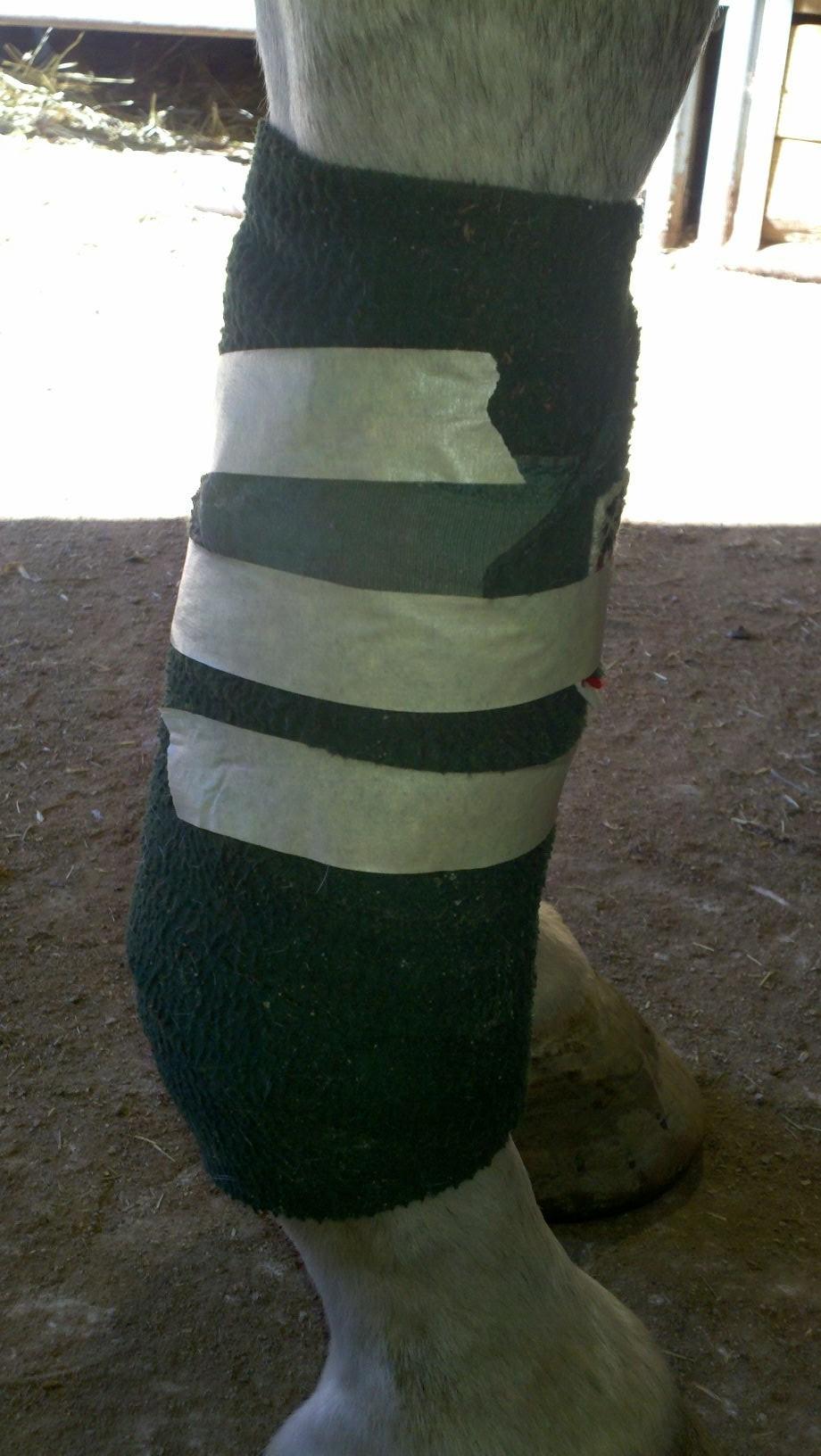
Like everything in the horse world, learning to wrap polos takes PATIENCE and PRACTICE. Never settle for an OK wrapping job because you could potentially injure your horse.

